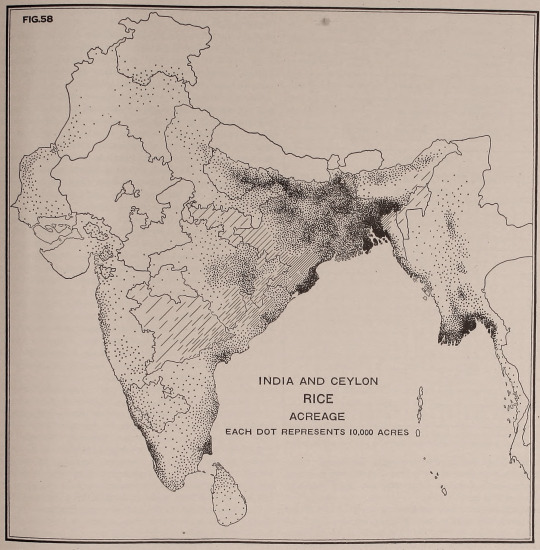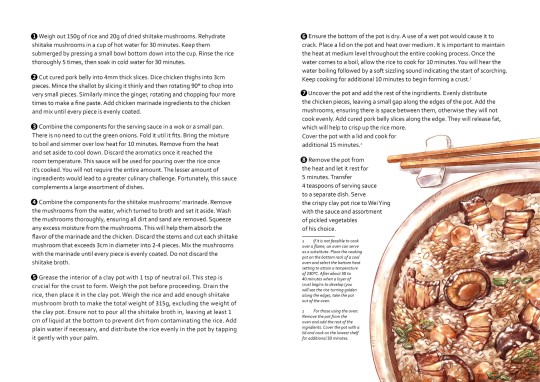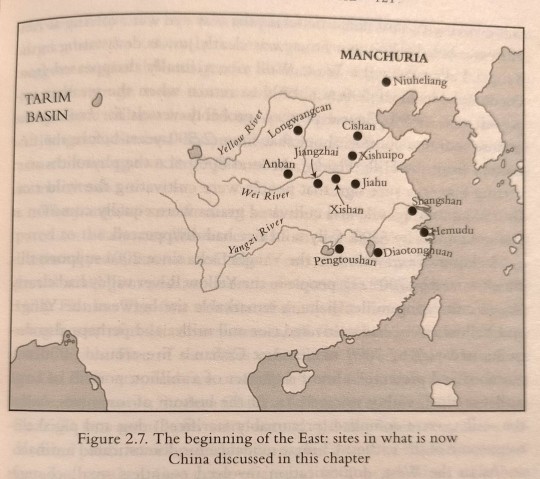#Rice Cultivation
Explore tagged Tumblr posts
Text

Fig. 58. India and Ceylon rice acreage. Each dot represents 10,000 acres. Geography of the world's agriculture. 1917.
#maps#charts#diagram#india#sir lanka#agriculture#each dot#dots#rice cultivation#land use#nemfrog#1917#1910s
109 notes
·
View notes
Text
How to Store Indian Spices for Maximum Freshness and Flavor?
To store Indian spices for maximum freshness and flavor, it's essential to follow a few simple yet effective practices. First, always store spices in airtight containers to prevent air and moisture from degrading their quality. Glass jars or spice tins with tight lids are ideal for this purpose. It's also important to keep spices in a cool, dark place, away from direct sunlight and heat sources like stoves or ovens, as light and heat can diminish their flavor and aroma. Additionally, storing spices in a dry environment is crucial, as humidity can lead to clumping and spoilage. Whole spices, such as cinnamon sticks, cardamom pods, and cumin seeds, last longer than ground spices and retain their flavor better, so it's a good practice to grind them only when needed. To avoid odors being absorbed, it’s recommended to store spices in glass or ceramic containers rather than plastic. Finally, regularly check your spices for changes in color, aroma, or taste, as they lose potency over time. By following these tips, you can ensure that your Indian spices stay fresh and flavorful for long.
#Basmati rice#rice suppliers#India#quality standards#rice cultivation#milling process#international certifications#HACCP#ISO#quality checks
0 notes
Text
#1122 Rolls#Raw Paddy#Agriculture Tips#Sustainable Farming#Paddy Farming#High-Quality Grain#Agricultural Productivity#Crop Management#Farming Techniques#Harvesting Tips#Organic Farming#Farming Resources#Agricultural Insights#Rural Development#Rice Cultivation
1 note
·
View note
Text
Rice Cultivation & Methane Emissions: Study Shows Increasing Rice Cultivation Contributes To Methane Emissions In Africa
Key Takeaways Chen et al. (2024) identify Africa as a significant contributor to the current increase in atmospheric methane, attributing it to wetlands, livestock, and, notably, rapidly increasing rice cultivation. The study estimates that rice cultivation in Africa accounts for 7% of the rise in global methane emissions. The research highlights the need to consider the impact of continued rice…

View On WordPress
0 notes
Text

第二期稻作
#sometimes i should go to sleep but i get too into looking up rice terminology#there are two cultivation cycles and now is the second one#九月也有綠油油的稻田啦#taiwan#taipei#rice field#rice paddy#北投區#beitou#green
62 notes
·
View notes
Text
Trying to watch cooking videos is so damn hard cuz I'll scroll the comments n I'm like oh yeah a lot of people are racist
#okay i will admit it was rice field rats#but like damn how many ppl click videps just to say some shit like so filthy do you guys not have chickens#THE FOOD LOOKS GOOD WHY DO U LIE SO HARD#i love you livestock cultivation#also for anyone reading this no i don't hate rats#ppl who eat burgers don't hate cows#atleast i don't think so#i just like looking at cooking videos
11 notes
·
View notes
Text
Here's one of my entries for the @mxtxfoodzine done in collaboration with my old friend Aseneth.



And here comes a story how we created it.
The goal was to create a dish that can be a gesture of love and require some dedication to cook. Something that warms you up from within and make you sigh with delight after you are done with the meal. A crispy clay pot rice dish was picked almost randomly. Aseneth saw it and was like yeah, look how wholesome and hearty it looks! It has everything: meat, mushrooms, egg and veggies! Let's make it!
Can't say it was easy tho. Neither of us had clay pots and gas stoves, so it was a quest in itself to find the right pot and an alternative way to cook the dish.
Now I can say with confidence that Asian (Korean) pots for soup or porridge work the best. They are wide and have rounded bottoms which are perfect for fitting the ingredients and forming a crust on rice. And it's nice to eat directly from them.
I've tried a number of crispy clay pot rice recipes. I made my mind that I absolutely must add pork belly there, cause I was confident Wuxian will appreciate it. You have no idea how many ways there are to cook a pork belly in China. I had no idea as well. I've bought and used ingredients which I've never tried before. I've ruined my digestion system in the process of trying variants. And yet everything seemed a bit off. Luckily I've found a recipe of cured pork belly from a 103 old woman, which her granddaughter carefully wrote down and shared with the world. And after several more attempts to squeeze some vegetables into the recipe I finally gave up and took the route of traditional approach with that special cured pork belly. The dish became balanced at last. And marinated veggies served separately turned out to make the best garnish because of their sour taste, which suited the warm meaty, oily and earthy tones of the clay pot rice. Finally I was content. This recipe was designed for Wangji to make. It had to be nothing but perfect. And it should be cooked according to Chinese cuisine traditions.
We also wanted to show how meticulous Wangji can be with cooking. That's why he's looking at the cup like he's up to murder. He's just looking very closely if this is the right amount of broth to add to the rice. The recipe is written in academic style for the same reason.
So yeah, that's the story of our 9-month journey of creating this. Was super fun and exiting, I had perfect excuses to visit my friend more frequently than usual. But at times titiring and frustrating, cause oftentimes things didn't go as planned and were very time consuming. I'm totally up to repeating a similar experience in a year or two tho :D
I'll be very glad if someone will cook this and tell me or show me how it turned out. I hope you'll like it as much as I do! 😁
#conscydraws#mxtxfoodzine#mxtx#mdzs#mo dao zu shi#grandmaster of demonic cultivation#lan wangji#wei wuxian#crispy clay pot rice#chinese cuisine
49 notes
·
View notes
Text
In 1988 excavators at Pengtoushan in the Yangzi Valley (Figure 2.7) noticed that around 7000 BCE potters began mixing rice husks and stalks into their clay to prevent pots cracking in the kiln, and close study revealed surefire signs that these plants were being cultivated.

"Why the West Rules – For Now: The patterns of history and what they reveal about the future" - Ian Morris
#book quotes#why the west rules – for now#ian morris#nonfiction#80s#1980s#20th century#archaeology#excavation#pengtoushan#yangzi river#yangzi valley#potter#pottery#rice#husk#stalk#cracking#kiln#cultivation
2 notes
·
View notes
Text




I am making a concentrated effort on bringing joy into my life, and let me tell you, it’s worth it
Also never let the peace sign die
#my joys have been eating ice cream and singing in my car and meeting new people and working on cultivating friendships#I’ve also rediscovered the joy of fried rice#find your joy#it’s worth it#my face#selfie tag
9 notes
·
View notes
Video
youtube
Cultivate Taste Tea - Rice Oolong tea - "Sticky Rice Oolong"
#youtube#sticky rice tea#thai oolong#cultivate taste tea#cultivate taste tea salon#wbenc#tea#loose leaf tea#oolong tea#gong fu cha
2 notes
·
View notes
Text
How Basmati Rice Suppliers in India Ensure High-Quality Standards?
Basmati rice suppliers in India ensure high-quality standards through stringent processes, including selecting the best varieties of rice, maintaining proper cultivation practices, and using advanced milling techniques. They follow international quality certifications like ISO, HACCP, and others to meet global standards. The rice undergoes thorough quality checks for moisture content, aroma, and purity before packaging. Suppliers also prioritize traceability, ensuring that the rice is free from contaminants and remains consistent in quality.
#Basmati rice#rice suppliers#India#quality standards#rice cultivation#milling process#international certifications#HACCP#ISO#quality checks
0 notes
Text

Rice Paddies at Dusk: A Stunning Sunset Over the Asian Mountains
In this breathtaking scene, the sun begins to dip below the horizon, casting a warm, golden light over the lush greenery of the rice paddies below. The mountains in the distance create a stunning backdrop, with their rugged peaks towering into the sky. As the day draws to a close, the farmers begin to wrap up their work, but the beauty of the landscape lingers on. The tranquility of the moment is palpable, and it's easy to imagine oneself getting lost in the peacefulness of the countryside.
#rice paddies#sunset#Asian mountains#greenery#farming#agriculture#rural life#landscape#tranquility#beauty#nature#outdoor#travel#scenery#peacefulness#serenity#relaxation#harvest#crop#cultivation#sustainability#traditional#cultural#outdoors#farmland#food#staple crop#farming techniques#terraced fields#earthy
4 notes
·
View notes
Text
I think I'd rather call it strong encouragement <3
love is stored in the friend who reads your fanfiction
#there's also a lot of love stored in the friend who lets themselves be encouraged#and puts a lot of time and effort into researching wet rice cultivation
21K notes
·
View notes
Text
How JKUAT is Bridging Theory and Practice in Sustainable Grape and Rice Farming
In a groundbreaking move to promote hands-on learning for sustainable agriculture, researchers at Jomo Kenyatta University of Agriculture and Technology (JKUAT), have successfully completed a demonstration project on grapes and rice cultivation. This initiative aimed at changing the identity of rice and grapes in Kenya as an ‘aristocratic fruit’, and hopefully facilitating entry of the two into…
#agricultural education Kenya#agricultural partnerships#agricultural research Kenya#agriculture and innovation Kenya.#Beijing grapevine science#crop diversity Kenya#food security in Kenya.#grape cultivation Kenya#grapes and rice farming in Kenya#hands-on agricultural education#hybrid rice farming#JKUAT agriculture project#JKUAT demonstration project#JKUAT farming initiatives#JKUAT Sino-Africa initiative#Kenyan agriculture innovation#local farmer workshops#modern agriculture Kenya#organic farming techniques#precision agriculture Kenya#Sino-Africa agricultural collaboration#student-led farming projects#sustainable agriculture Kenya#sustainable farming practices#winemaking technology Kenya
0 notes
Text
i loooooove a good analogy so much
#lady yesterday said that when she ran her iwn business in ghana it was like wanting cooked rice for a meal but needing to first#cultivate and grow it from scratch#and i was like 🤯#my posts
0 notes
Text
Cultivation of rice began in the Yangzi Valley between 8000 and 7500 BCE and of millet in north China by 6500.
"Why the West Rules – For Now: The patterns of history and what they reveal about the future" - Ian Morris
#book quote#why the west rules – for now#ian morris#nonfiction#cultivation#farming#yangzi river#yangzi valley#rice#millet#grains
0 notes